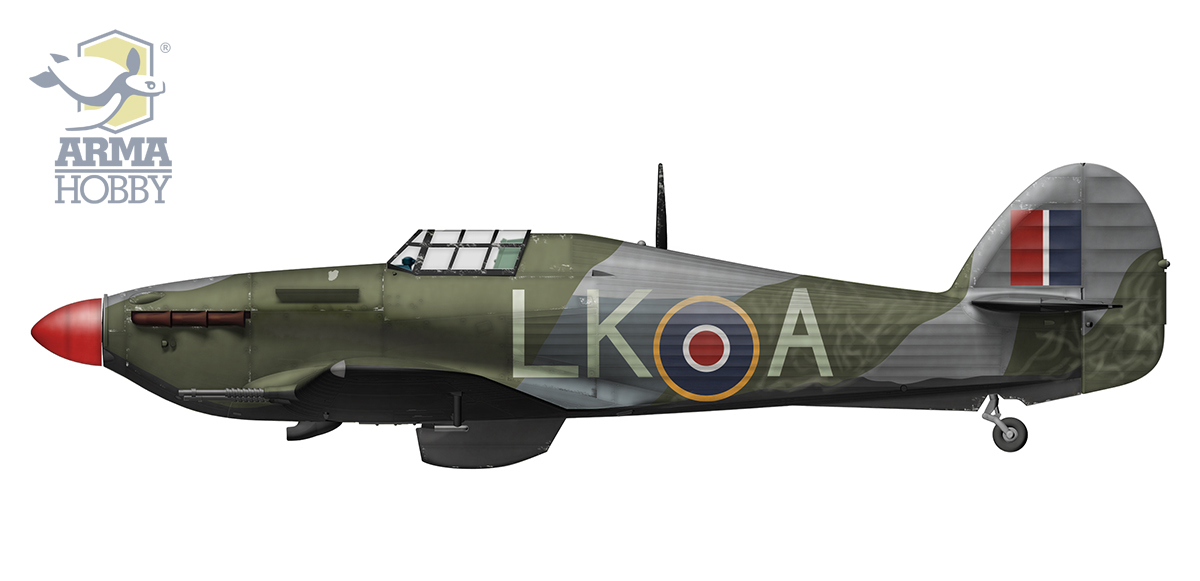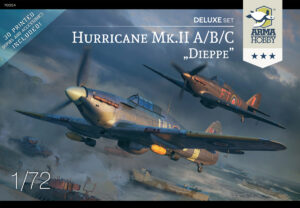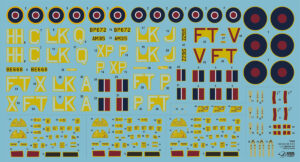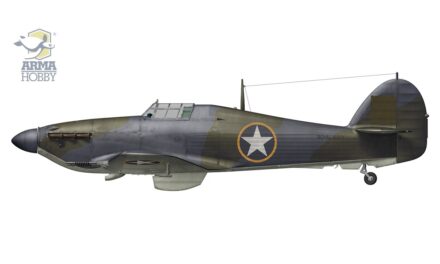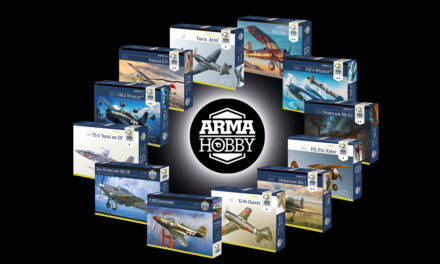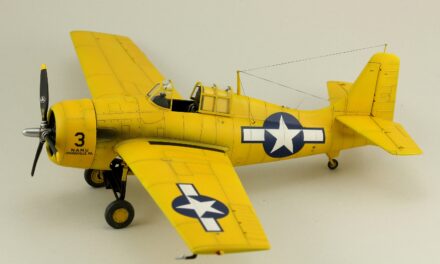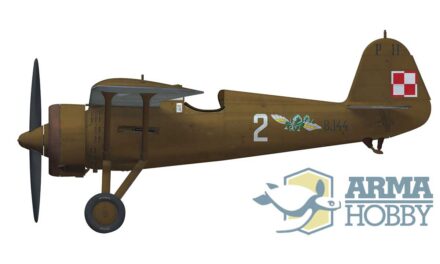Editor’s note: One of the most active Hurricane-equipped squadrons, operating on August 19, 1942, over Dieppe, was the No. 87 RAF Squadron, usually serving at night, performing classic fighter and intruder operations. Though its pilots had no ground-attack training, their cannon-armed planes were well suited to the air-support missions. To make the night-black planes fit the operating conditions during the day, they only had to be repainted. Grzegorz Cieliszak describes this in his next richly illustrated article.
Three sorties a day – No. 87 Squadron
In the Operation Jubilee 87 Squadron flew three sorties. Squadron task was to attack targets with cannon fire just after they were bombed by bombers, mostly Hurri-Bombers Mk IIb.
- First sortie, after 7:35 AM. When Bostons from No. 88 Squadron bombed coastal battery”Rommel”, W/Cdr Smallwood (BE500/LK-A) led a column of tree sections of four aeroplanes throught deadly Flak fire. Polish pilot F/O Antoni Waltoś was killed, and P/O Baker was shot down and landed safely with parachute.
- Second sortie after 10:15 AM, again lead by W/Cdr Smallwood (BE500/LK-A). Squadron entered combat just after Hurricane Mk IIb from No. 175 and No. 253 squadrons dropped their load. They fired at German positions on cliffs at “Rommel” battery and all pilots returned safely.
- Third sortie after 1:25 PM, was planned with cooperation of the Hurricanes Mk IIb from No. 174 squadron. This time No. 87 squadron was lead by F/Ltn Stuart Hordern (HL864/LK-?). Smoke screen over Dieppe prevented combined attack and squadrons operated separately. Targets of opportunity were attacked with cannons including MG nest on the cliff and lorries at the rear of defensive positions. F/Sgt R. Gibson was killed in action.
A new Arma Hobby 1/72 Hurricane MkIIA/B/C “Dieppe” Deluxe Set includes three further Mk.IIa and IIc versions from No. 87 Squadron RAF.
A veritable feast for those who enjoy painting aircraft. All modellers from the 40+ age group remember the Matchbox model – the spotted BE500/LK-A with a black underside. Photographs of formations from No. 87 Squadron RAF are easily recognizable. A few other pictures of fighters with this eccentric paint scheme have been found in archives, inspiring a number of model-making companies and decal producers. And, despite the scheme being known to modellers for several dozen years and a great many attempts being made at its recreation, among others by Arma Hobby with its first Mk.IIc kit, none has really come close to the prototype. I think that the present attempt best resembles the original and, what is equally important, is most attractive visually. It is the result of the comparison of numerous sources and, perhaps first and foremost, of an analysis of the holdings of the Imperial War Museum. I will briefly present how we interpreted the data available on photograph and film, and leave the final assessment up to you.
Hurricane Mk.IIc BE500/LK-A. No. 87 Squadron RAF. Tangmere airfield. Aeroplane took part in three missions during operation „Jubilee”. Pilots S/Ldr D.G.. Smallwood i F/L A.H. Thom
The first more or less correct study of this camouflage appeared in a booklet from the “Camouflage & Markings” series, published in 1971. At the time, however, no one was aware of the circumstances of in which it originated, and it was therefore considered that it had been developed for intruder operations. The similarity to the paint scheme used on intruder Mosquitoes, which had a similar set of colours, could have been misleading for the author and led him to think that, in 1942, Hurricanes from No. 87 Squadron RAF were also painted in Medium Sea Grey and Dark Green. But he failed to note that this intruder scheme was introduced at a somewhat later date.
Hurricane Mk IIc – myśliwiec na każdą porę, w nocy i w dzień
Today, the Matchbox kit, which was made in 1973, is viewed as archaic, however the paint scheme visible on the box was clearly based on the above-mentioned publication. What sticks out is the light grey colour proposed by the manufacturer. In the 1970s, the former pilot of BE500, Sir Denis Graham Smallwood – at the time Air Chief Marshal – was still in active service, while ex-airmen and mechanics of the unit organized regular get-togethers. Perry Adams’ book, “No. 87 Squadron at War 1939–1941”, which, incidentally, was the end product of these veterans’ reunions, also presents a variant with the so-called Intruder Scheme, with the upper surfaces in light grey. Doubtless at the time the colour profiles were worked out on the basis of both photographs and oral accounts. That is why, when I turned my attention to interpreting the Imperial War Museum films, I already had numerous hints and tips at my disposal. However, in an interview given years after the war, Smallwood clearly stated that this paint scheme had been developed not for intruder operations, but specifically for the action over Dieppe. The matter has been finally settled by an entry in the unit’s records, wherein it was written that the aircraft were repainted by the squadron’s personnel on 18 August 1942, within no more than a few hours, in preparation for Jubilee. Before that, they had been flown in the typical night camouflage of the time, i.e. completely black.
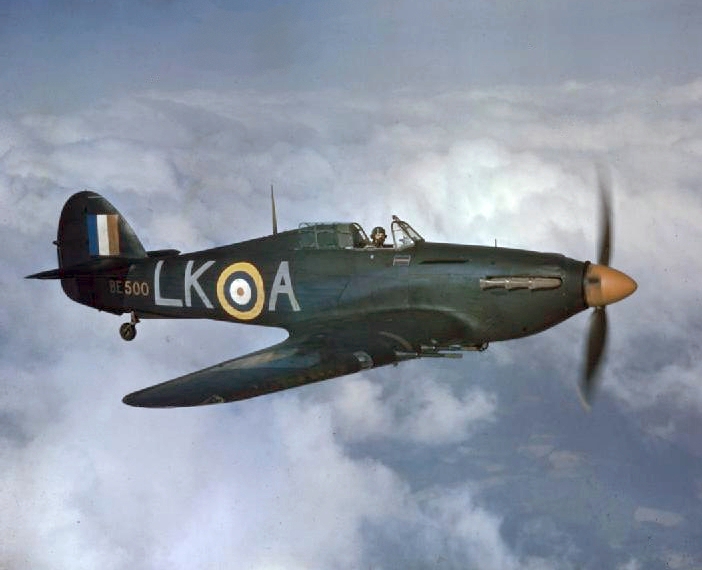
BE500/LK-A in Night finish, 1942, before the Dieppe Raid. Fot. Wikimedia Commons
I imagined to myself the enormity of the work that the mechanics had to perform in such a short space of time, giving it their all to make the eighteen black Hurricanes resemble day fighters. There was no time for finesse or corrections. Paintwork was carried out using an improvised template, which was probably initially drawn in chalk on the aircraft. Clearly, Ocean Grey was not available, and was therefore replaced with Mixed Grey, which was an ad hoc mix of Medium Sea Grey and black, whereas no effort was made to observe fixed proportions, and so a single aircraft could have various hues of grey. If it were pure MSG, the colour should have been uniform over the entire fighter. We have adopted the simplification that there were just two hues of grey, but it is possible that every “painter” had his own, with each bucket of paint containing a different mix. This was obviously unintended, for while BD833 has a darker version of grey on its wings and a lighter one on the fuselage, we can find examples of aircraft with wings painted in a lighter hue – on BE500, there is complete chaos.
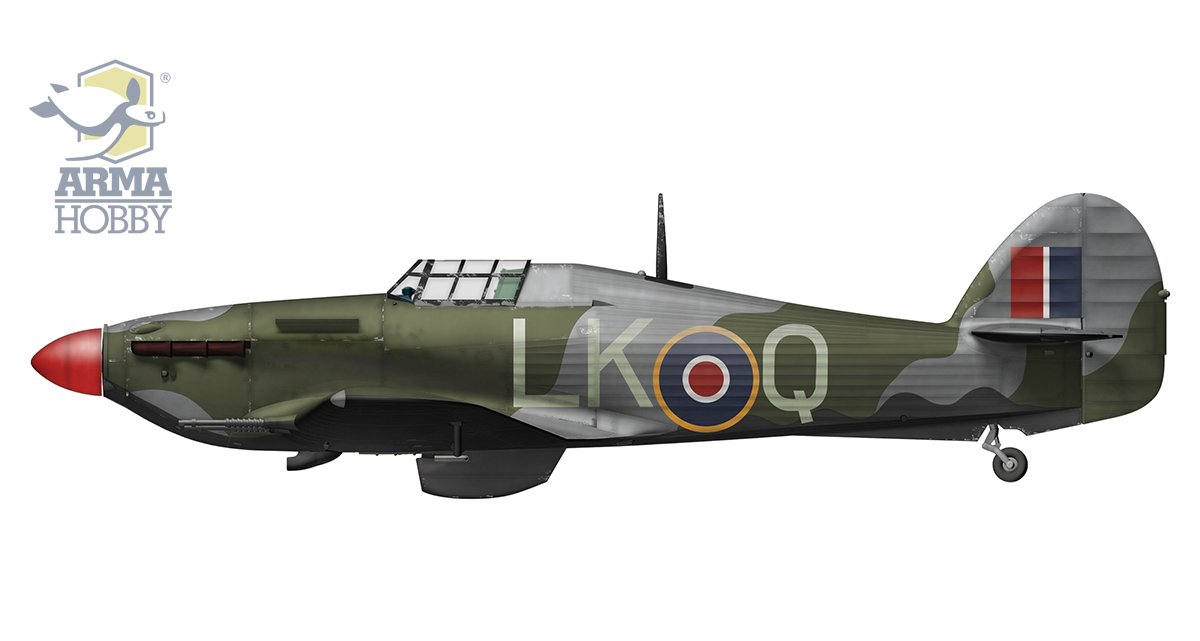
Hurricane Mk.IIc BD833/LK-Q. No. 87 Squadron RAF. Tangmere airfield. Aeroplane took part in three missions during operation „Jubilee”. Pilots: P/O G.W. Mosley and P/O D.G. Metzler
The paintwork was therefore in many ways unique, and this was a reflection of the provisionality of the solution and the haste with which it was applied. One can only imagine the men running around with buckets and brushes, hurrying feverishly to daub a few dozen square metres of fighter as dusk fell. It would have been easy to make an error. For example, someone could have used grey on a fragment that was to be painted green. And another colour would have had to be put on the first, still only semi-dry. But paints smudge and create streaks. This is how I would explain the imperfect execution of the green patches on the tail and left wing of BE500. Such irregularities appeared in various places on a number of aircraft. I was also surprised to find that the majority of the Hurricanes had their spinners painted in Sky, which was a quick identification element characteristic of day fighters, however there was a lack of consistency in this regard. The spinner of BD833 was definitely left red. Painting in haste, the mechanics also covered the blue sash carrying the inscription “United Provinces”, the name of the aeroplane (BD833’s was “Bahraich”, and BE500’s “Cawnpore I”), and its serial numbers.
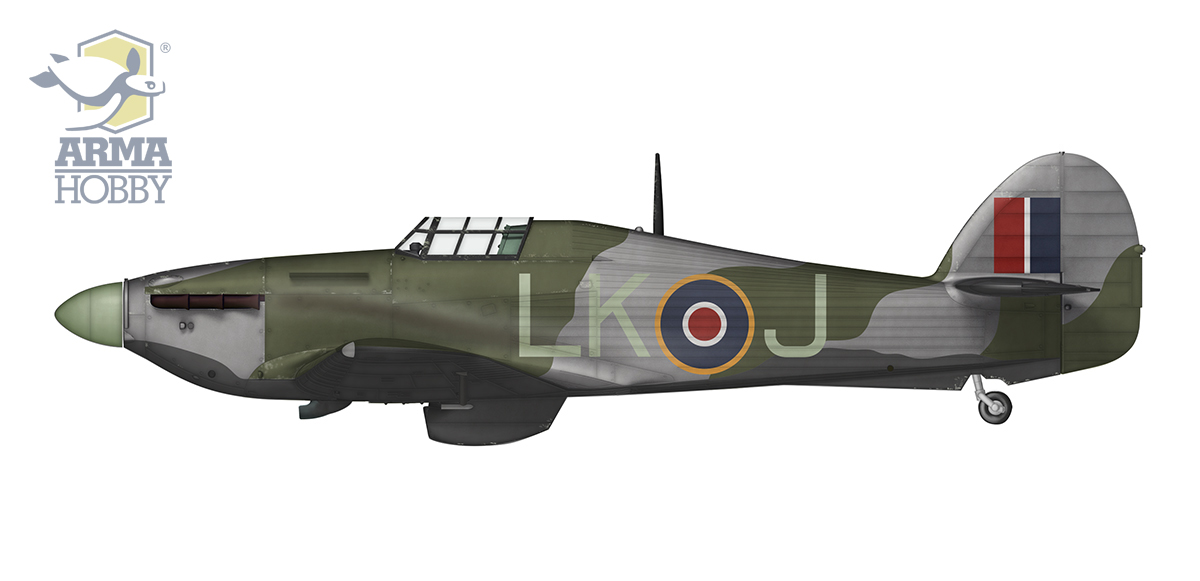
Hurricane Mk.IIa Z2643/LK-J. No. 87 Squadron RAF. Tangmere airfield. Aeroplane took part in two missions during operation „Jubilee”. Pilot: P/O Andrzej Malarowski (Polish Air Forces)
The identification markings also suffered, as we can clearly see that a yellow border – somewhat uneven – was added around the fuselage cockade and the fin flash on the rudder. Moreover, on BE500 and Z2643 the fin flash is of non-standard proportions: it is 27 inches high, which was typical of earlier versions, while on BE500 its lower part has been partially painted over. Between the cannons is a red stripe, which survived the repainting from night camouflage. This was used in No. 87 Squadron RAF to mark the Long Range version, which could be fitted with additional fuel tanks. After the operation, when things calmed down, the light spinner characteristic of day fighters was painted fully red. This is already visible in the photographs of Z2643, but on 19 August its spinner was most definitely light-coloured.
When painting the Hurricanes of No. 87 Squadron RAF, it is worth considering the use of a brush instead of an air-brush – or perhaps applying both techniques – in order to better simulate the method originally used to create the camouflage. This is definitely a challenge for modellers, however I think that aircraft of No. 43 Squadron RAF are even more demanding (read more about them soon!).
And now let’s look at the photographs!

Photo clearly shows the simplified camouflage scheme, different than regulation one. This scheme can be observed on all the planes of the squadron
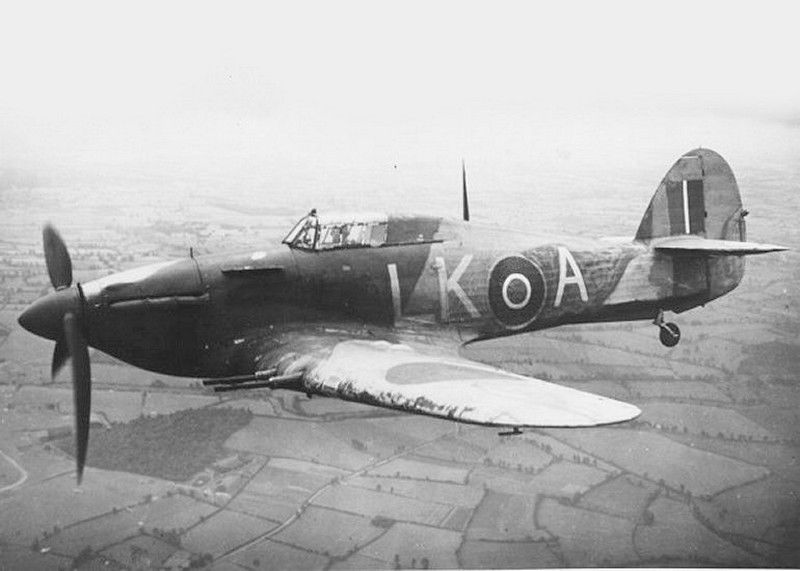
Clearly visible painting imperfections on the BE500 tail, most probably caused by the haste during re-painting of the planes on the day before the Dieppe Raid. Similar painting imperfections on the aeroplane’s port wing can be seen on the previous photo. Photograph – Tony O’Toole collection
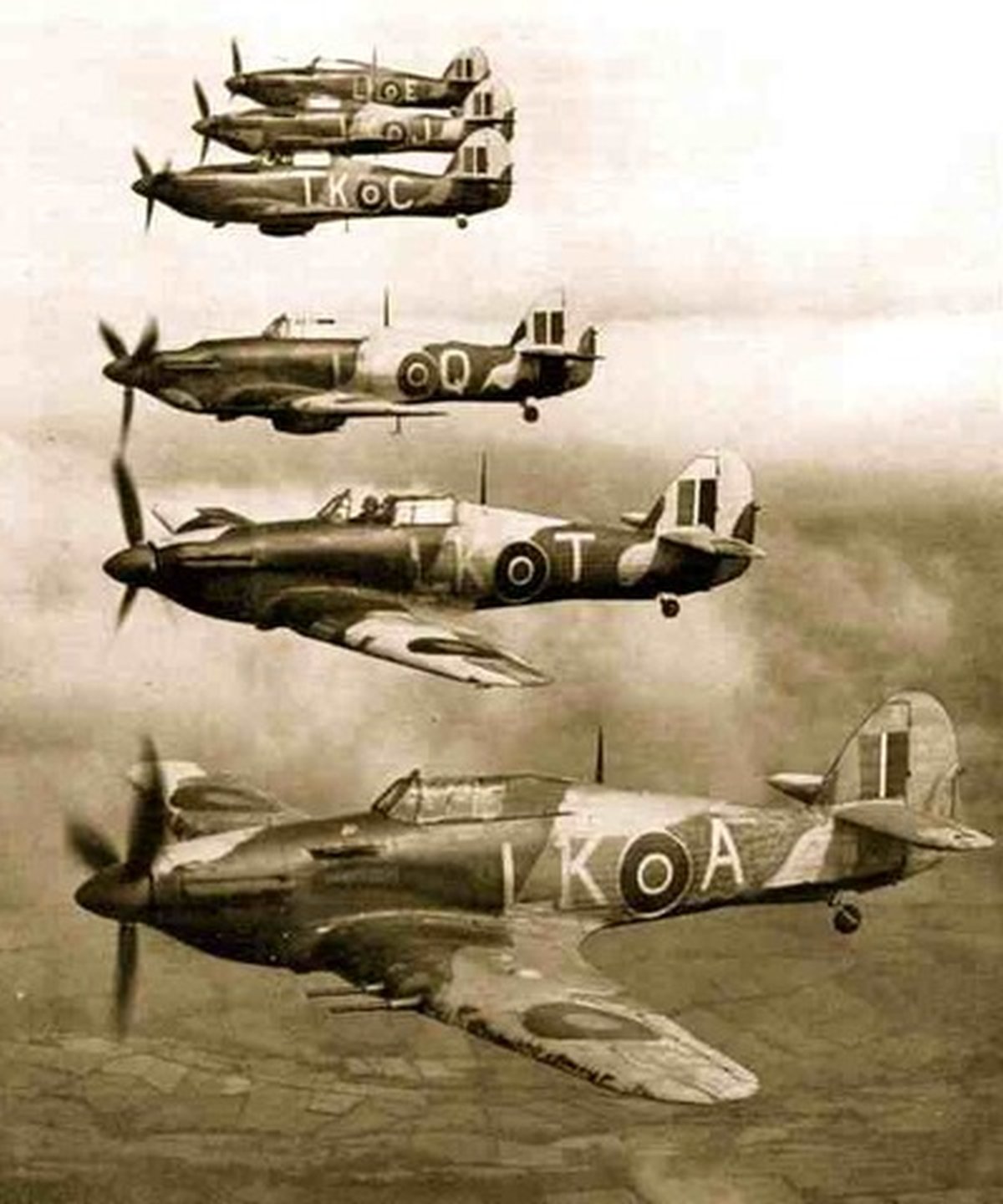
Photo made a few days after the “Jubilee” Operation. Spinners again in red, colour proper for night operations

BD833/LK-Q taxiing to take-off for the first mission of the day. Pilot P/O G.W. Mosley. Tangmere, 7:20 a.m. Thanks to films, preserved in the IWM collection, it was possible to see the other side of this aeroplane. Photo also shows differences in the Mixed Grey shades on the wing and the fuselage. Starboard wing leading edge between the fuselage and the cannons was grey, but in two different shades
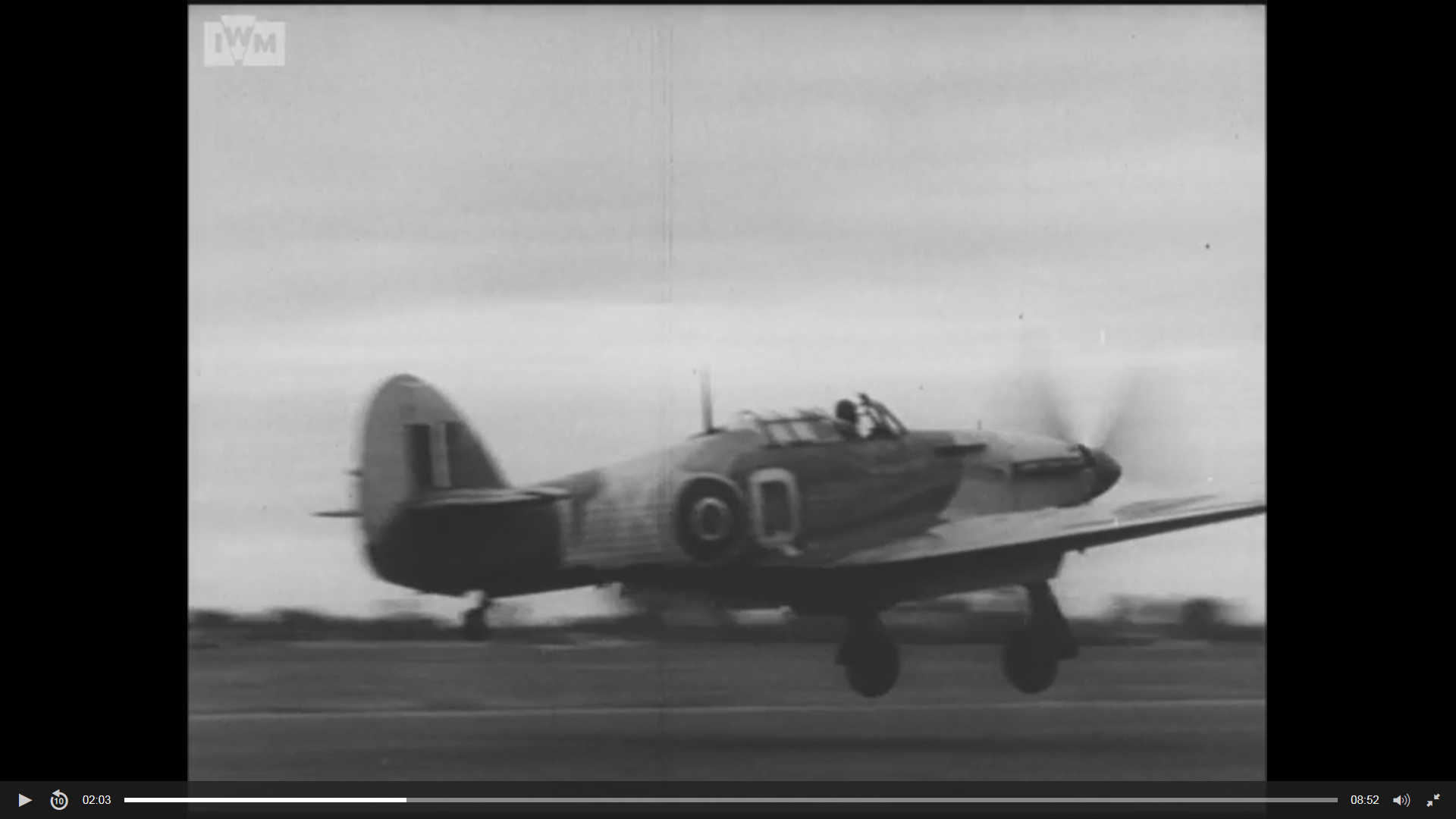
Return of the BD833. Patch of the darker Mixed Grey over the fuselage roundel. One of the hints helping to understand the origins of this complex camouflage

LK-K (serial unknown) on the Tangmere airfield, before the take-off for the first sortie. Note the spinner in light colour, most probably Sky. Until now, reconstructions of the markings of 87th Squadron planes did not show this element correctly. However, several planes, including the BD833 and BE500, retained the red spinners that they had before August 19, 1942
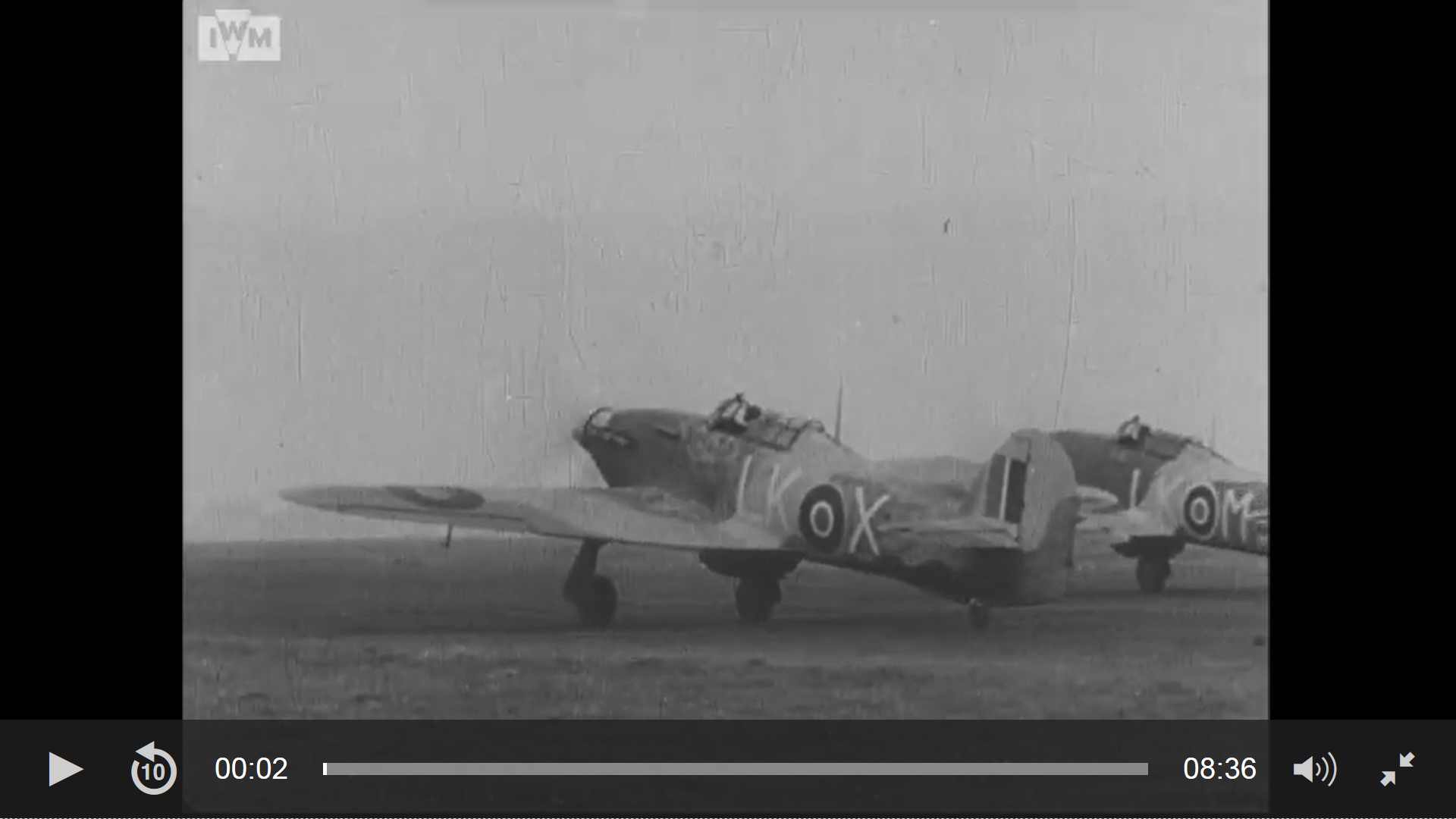
Two aeroplanes of the second section take-off for the first mission on 7:20 a.m. For both planes this mission was the last one. On Z2497/LK-X Polish pilot F/O Antoni Waltoś was killed. BN219/LK-M had managed to perform safe emergency landing so its pilot P/O Alexander Thom has came back to the unit and flew another sortie over Dieppe in the third squadron’s mission on BE500/LK-A. LK-X shows similar painting imperfections as the LK-A, uneven paint layer under the canopy and on the tail. Also various different Mixed Grey shades are visible – on the fuselage the colour is lighter than on the wings
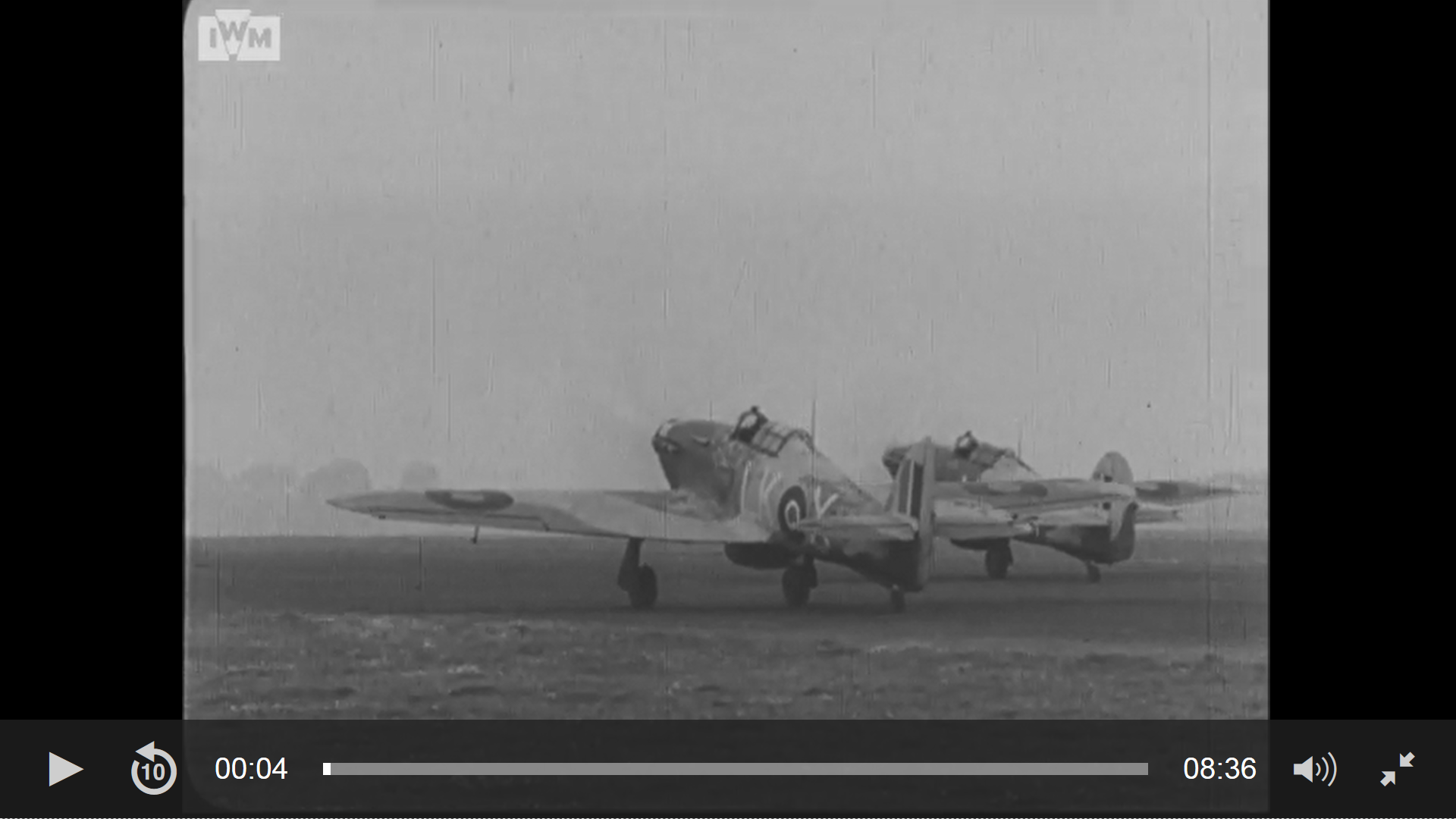
Another still from this film, showing the same two aeroplanes

Shot from another angle, showing the second section take-off. Z2497/LK-X piloted by F/O Antoni Waltoś and the Z3584/LK-Y in the foreground, piloted by F/O Michael Lewis. Note light propeller spinners, used on the No. 87 Squadron Hurricanes only during the day of the “Jubilee” Operation
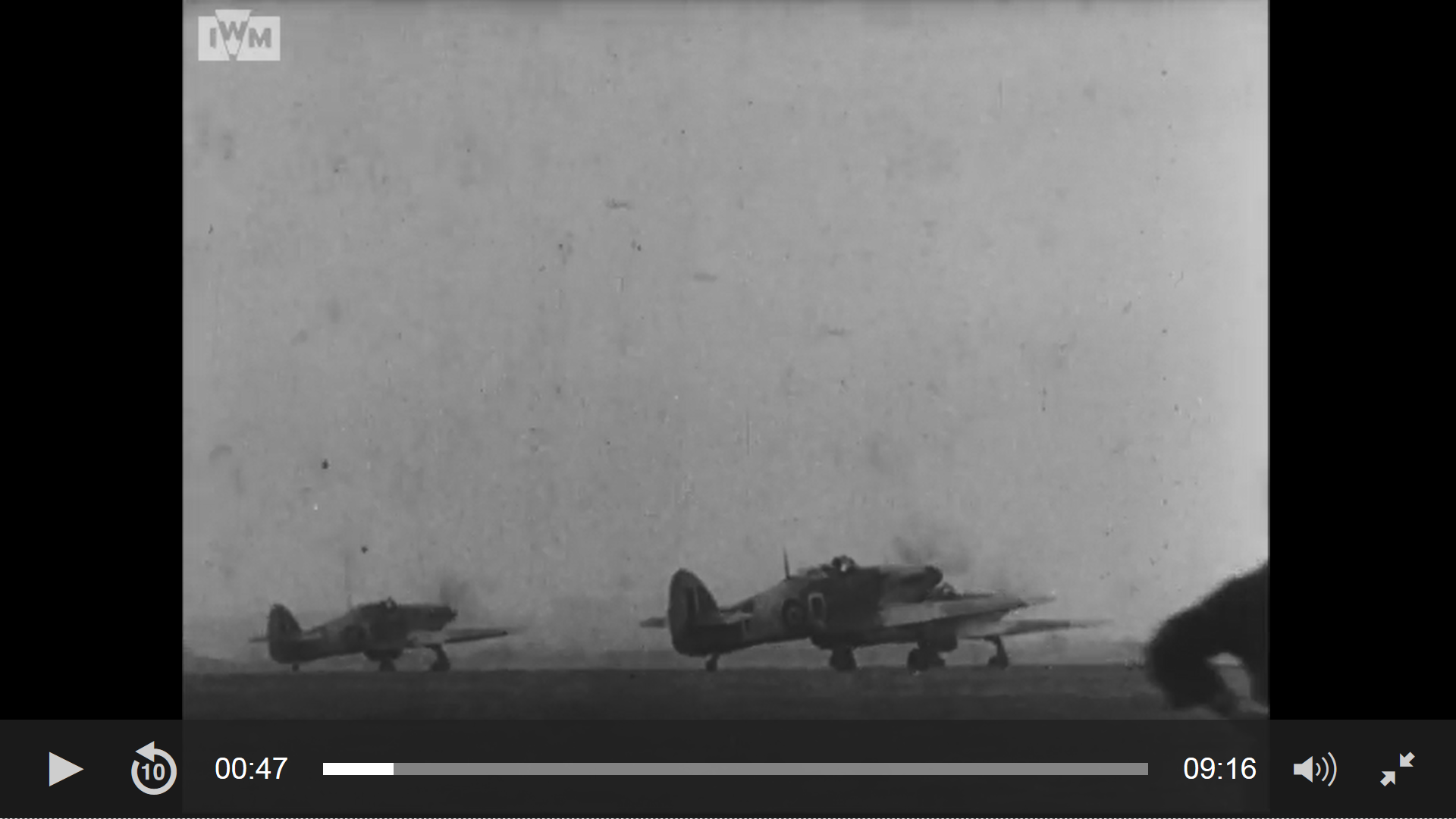
Second section take-off on 7:20 a.m. Section included four aeroplanes. P/O George Mosley on Mk.IIc BD833/LK-Q, F/O Michael Lewis on Mk.IIb Z3584/LK-Y, P/O Alexander Thom on Mk.IIc BN219/219 and P/O Antoni Waltoś on Mk.IIa Z2497/LK-X
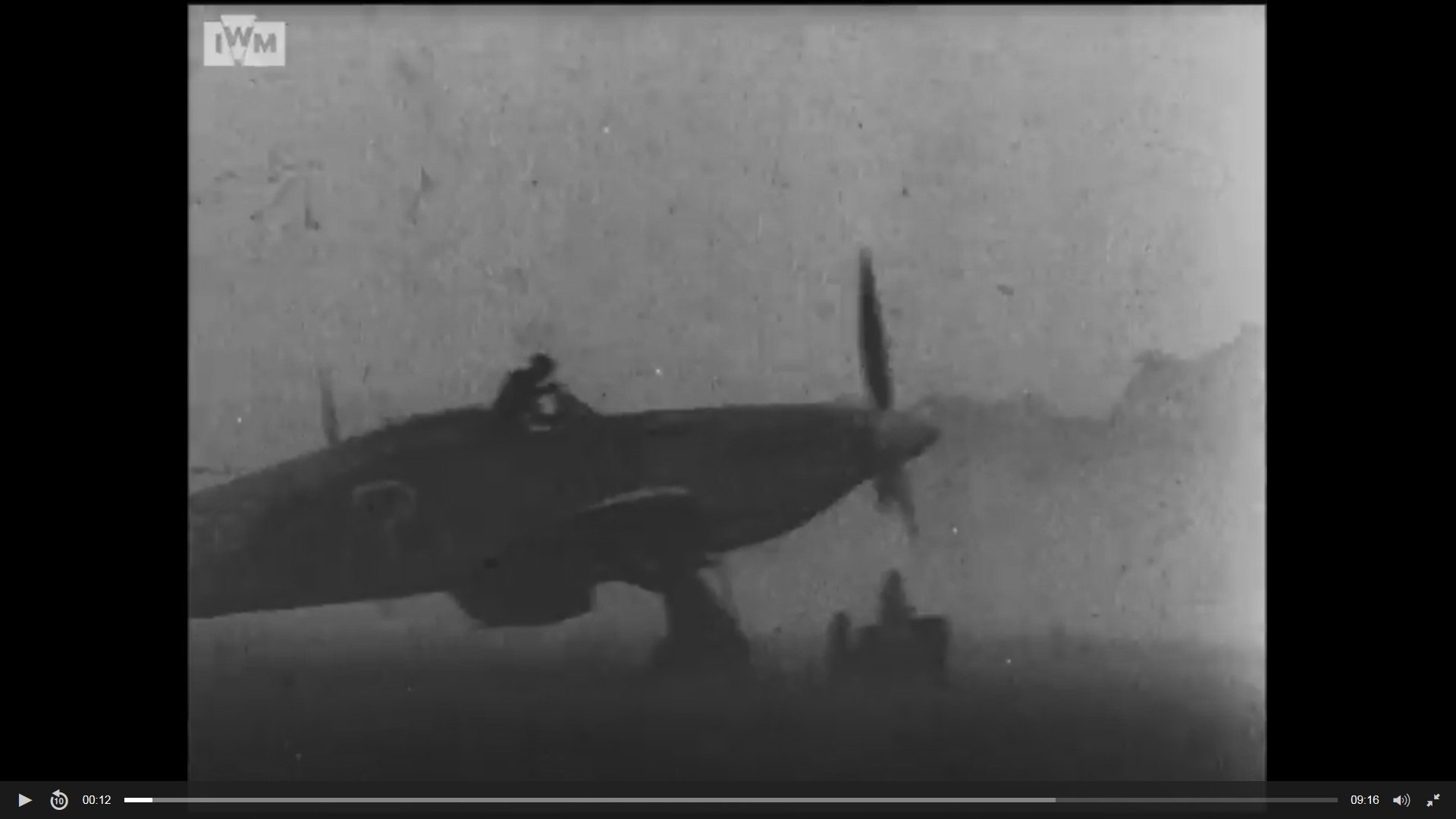
Another proof of the Sky coloured spinner. This time HL864/LK-?
Stills comes from following films: ARY 17-2, ARY 17-4 and ARY 17-19 preserved in the Imperial War Museum and are presented here according to the right to quote.
See also:
- Buy Hurricane Mk IIA/B/C “Dieppe” Deluxe Set and more in the Arma Hobby online store
Model maker for 45 years, now rather a theoretician, collector and conceptual modeller. Brought up on Matchbox kits and reading "303 Squadron" book. An admirer of the works of Roy Huxley and Sydney Camm.
This post is also available in:
 polski
polski


